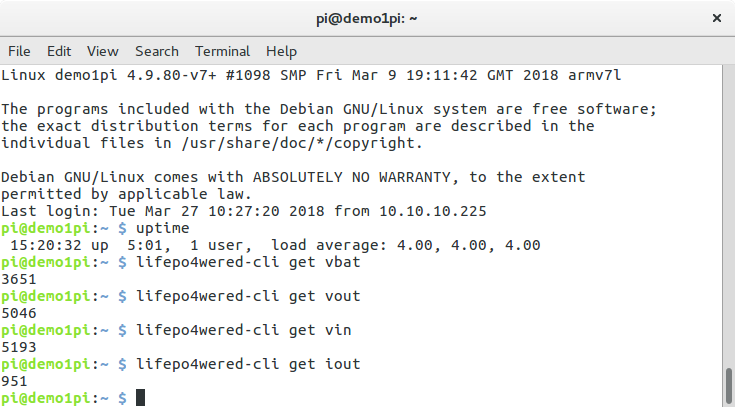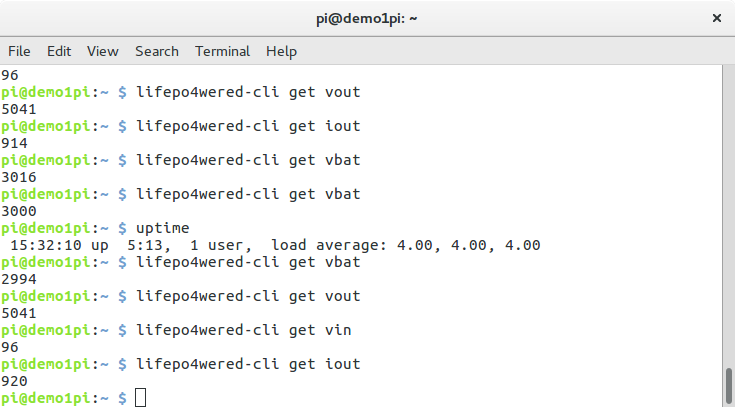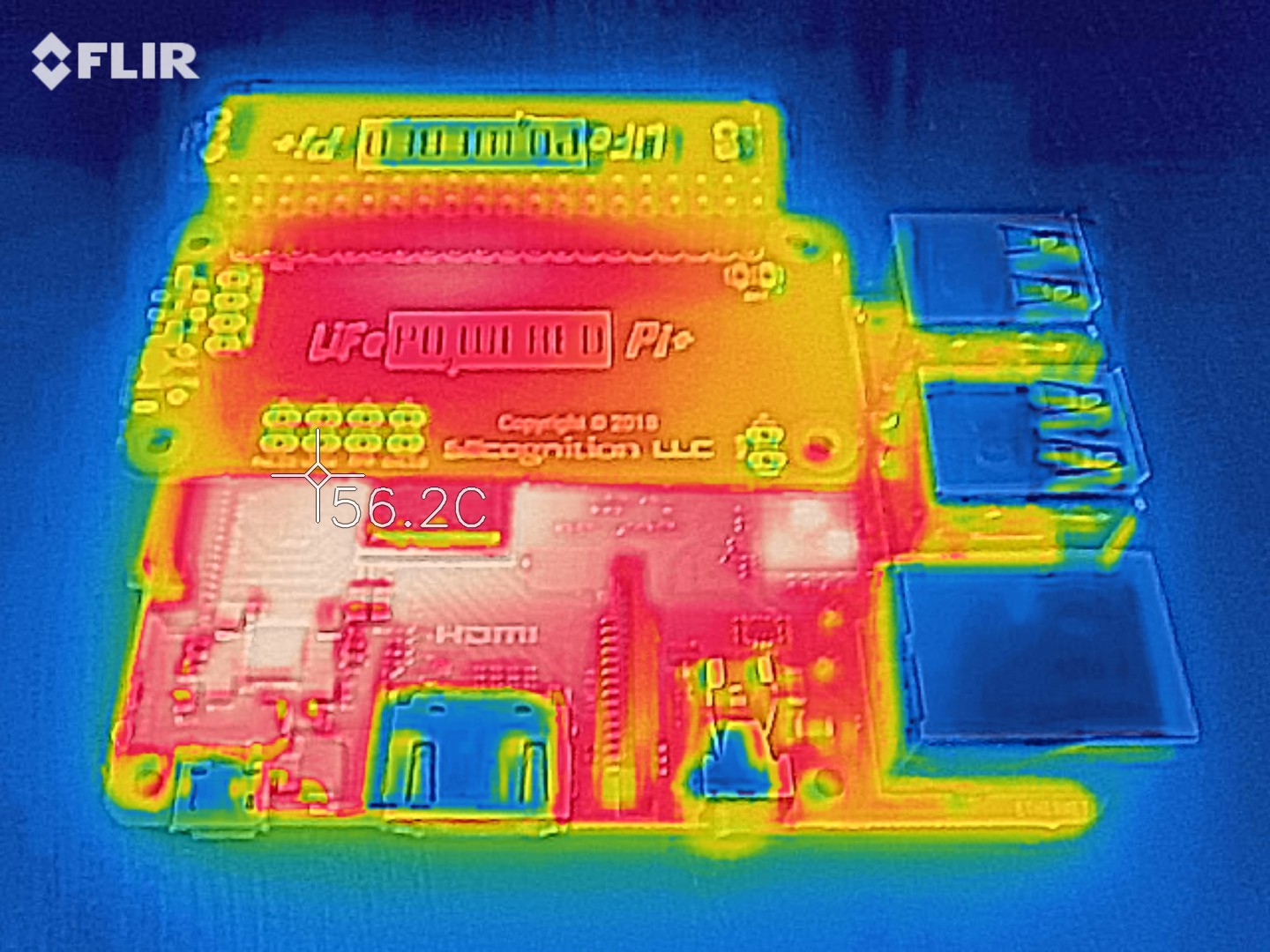I was curious if the 14500 (AA, small battery) option of the LiFePO4wered/Pi+ would be usable as a UPS for the new Raspberry Pi 3 B+, so I did a quick test. I ran my Raspberry Pi 3 B+ powered from a LiFePO4wered/Pi+ 14500 prototype, plugged in, for 5 hours with 100% load on all 4 cores (load average 4). After that time, I checked the voltage and current readings:

These readings are in millivolts and milliamps, and as you can see the battery is full, the output voltage is not sagging, and the Pi is drawing 0.95A.
At that point I disconnected the LiFePO4wered/Pi+ from incoming power. I wasn't sure what would happen: it was possible the battery voltage would sag enough for the system to immediately shut down, or worse, be powered off immediately to protect the battery.
That's not what happened though. The battery voltage immediately dropped a lot (due to its internal resistance) to around 3.1V, but the system continued to run! After about 10 minutes I took these readings:

As you can see the load average is still the same, by now the battery voltage has dropped to 2.99V, but the output hardly budged: still a steady 5+V. After about 15 minutes, the battery voltage had dropped enough to trigger a clean shutdown. Just before this happened I took this thermal shot:

As you can see, the Pi 3 B+ is hotter than the LiFePO4wered/Pi+.
Very happy with this result! It is good news for those who don't care about run time but just want enough power to do a clean shutdown. Even with a heaviliy loaded Pi 3 B+, the 14500 size battery works.
If you're going to do this, I recommend using the AUTO_SHDN_TIME register to either trigger an immediate shutdown or timed to 5 minutes or so, to reduce stresses on the battery. If you want the system to keep running as long as the battery can support it, I'd recommend bumping the VBAT_SHDN to 3000 (3V) or even 3050 (3.05V) though. The reason is that the boost converter experiences a lower input voltage than the one measured by the micro due to the charge current limit resistor which drops more voltage at high current, and you don't want the boost converter's low voltage cutout to trigger and turn the output off before the micro decides to do a shutdown.
 Patrick Van Oosterwijck
Patrick Van Oosterwijck
Discussions
Become a Hackaday.io Member
Create an account to leave a comment. Already have an account? Log In.
Wow I had to catch up reading, lots of good things happening and lots of improvements, great!
Are you sure? yes | no